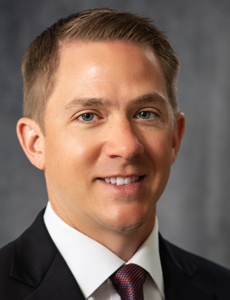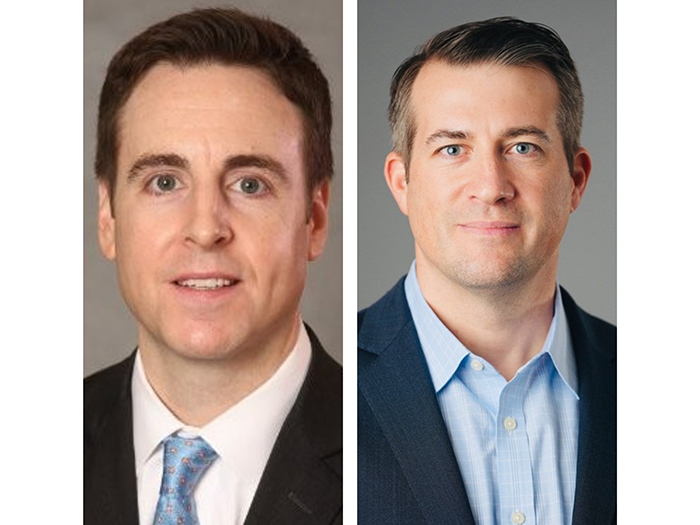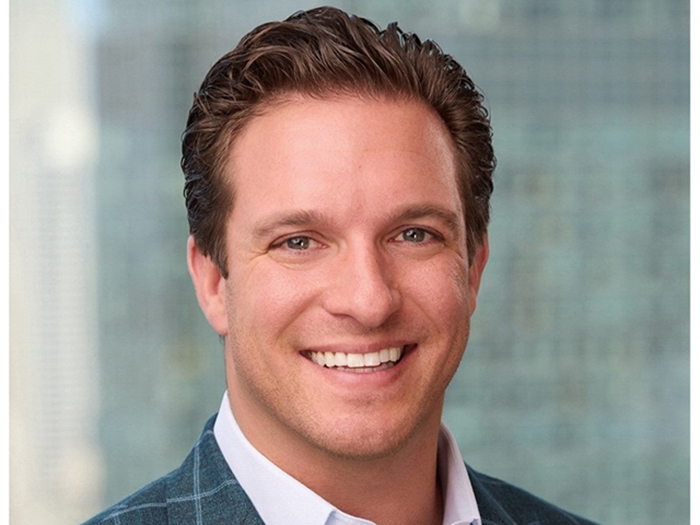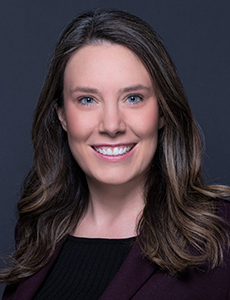A Changing Work World Means EPLI Takes On New Weight. 10 Exposures to Keep an Eye On

It’s no secret that the last few years have been a time of great change, but perhaps nowhere have those changes been felt more acutely than in the employment practice liability insurance (EPLI) space.
In addition to COVID and issues surrounding remote, hybrid and return-to-work, employers face turmoil on a number of social, technological and legal fronts.
“Right now, it’s a really dynamic EPL landscape,” said Lauren Kim, senior vice president, legal and technical leader at NFP.
“It’s very interesting, but it’s a really challenging time for employers right now, because they’re facing a lot of forces all at once. COVID-19 response, the return-to-work response, a lot of the social issues that are happening right now, the labor market in general. There’s a lot of forces that are impacting EPLI all at once in a way that’s unprecedented.”
Despite these factors, Raymond J. Ash, senior vice president at Westfield Specialty, cited other important trends.
“The most important trends continue to be the declining EEOC enforcement actions. They’re now down for the sixth straight year,” said Ash. “That is kind of a surprise. People feared COVID and how the vaccine mandates would apply. People feared the return to work and hybrid work schedules.”
Ash attributed this continued decline to a number of factors, including the federal government’s firm stance on COVID vaccinations, relatively hands-off positions by employers scrambling to attract and retain talent, the positive impact of corporate diversity, equity and inclusion efforts, and a greater sensitivity among employers toward sexual harassment stemming from the #MeToo movement.
But while EEOC actions are generally seen as a precursor to litigation, others in the EPLI space have seen no decline in claims.
“We certainly have not seen a decrease on our book,” said Kim.
“I think the nature of EEOC claims have changed. They changed during COVID, and I think, quite frankly, they’re changing now as the return-to-work cycle is starting up … you’re seeing more claims in terms of how that is being applied, potential discrimination around those policies. Obviously, return to work was not even a thing three, four years ago. So suddenly you’re seeing a whole new type of claim come through.”
Here are a few areas of note for employers to review.
1) Return to Work and EPLI
As more and more companies return to the office, many in the EPLI space expect to see claims around accommodations. And after two years of pandemic, employers may be hard pressed to deny accommodations.
“I think you’re going to see an increase in requests for accommodation from people who have disabilities, whether it’s long-COVID or whether it’s some type of disability where they’re concerned about getting COVID,” said Laura Lapidus, employment practices liability and management liability expert at CNA Insurance.
“It’s a lot harder for an employer to [insist] that a job can’t be performed remotely when the employee has been doing it remotely for two years.”
It remains to be seen what the full impact will be on EPLI.
“It comes down to what employers are going to compel their employees to do,” said Brian D. Smith, Esq., senior vice president, with Gallagher Bassett’s executive & professional liability practice.
“Are they going to say it’s mandatory to go into the office? Are they going to be terminated for not going in? Would that be considered wrongful termination? Are they going to require their employees to be vaccinated? And if you’re not vaccinated and you’re in the health care industry, or another industry where they feel that it’s necessary, how does that impact your employment?”
2) Remote Work and EPLI
Remote work itself has presented different risks for EPL claims, as well.
“What you’re seeing is a change in harassment, because a lot of people aren’t necessarily in the office, so you have less of ‘he touched me, he rubbed my shoulders,’ ” said Lapidus.
“But you’re seeing more online harassment, and there’s a lot more potential for harassment, because if you’re on a video call, if it’s just two people, there’s nobody else around.”
Lapidus also noted the potential for exposure of workers’ personal lives as they Zoom in from home.
“You’re getting a glimpse into someone’s personal life when they’re sitting in their home,” said Lapidus. “You may learn something about a co-worker that you might not otherwise know, such as their religious beliefs or that they have a same-sex partner, which can then lead to harassment.”
She recommended managers check in with employees on a regular basis and if any issues are uncovered, to follow up appropriately.
“Hopefully, either HR or an independent consultant will do an investigation,” Lapidus said. “That’s always the case with harassment and discrimination complaints. Once you find out about it, you need to do a prompt and thorough investigation.”
Lapidus also emphasized the importance of training: “The EEOC says, in addition to doing the traditional anti-harassment training where we go through what the law says you can and can’t do, they suggest doing what they call workplace civility training.”
There are also wage and hour implications like signing or punching in and out at the beginning and end of the days and breaks.
“Employers have been vulnerable to employees who fail to follow these procedures and take their meal breaks or rest breaks or record their overtime,” said Smith.
Other concerns include reimbursements for work expenses at home, like high-speed internet, phones and other office equipment.
Smith emphasized the importance of having clearly defined procedures in place to minimize claims.
“Employers really need to set clear expectations with their employees and conduct regular check-ins and definitely address any issues promptly for a person who is working from home who is on an hourly basis,” Smith said.
3) A Talent Shortage to Boot
Other issues stem from today’s uniquely tight labor market, and the so-called “Great Resignation.”
“We are seeing companies offer higher compensation to new employees as one major way to attract talent,” said Jason Binette, EPL product manager at AmTrust EXEC.
“This could have a negative impact on current/existing employees if they are feeling undercompensated, especially if they are performing similar job functions.”
This could be especially problematic in light of the recent trend toward pay transparency, mentioned below.
Employers may also be tempted to lower standards in order to fill vacant positions.
“In a tight labor market, you may be hiring someone who may not be as qualified as you would otherwise like, but you don’t have a lot of options,” said Lapidus.
Obviously, that is far from ideal and can have a host of immediate implications, but more serious implications may be down the road.
In such a tight labor market, retaining employees can be as much of a challenge as attracting new ones, and many employers may be reluctant to discuss performance issues with employees for fear they might leave. But a failure to do so can have dire repercussions, particularly after having lowered standards.
“Especially now, that’s what attorneys are concerned about, that supervisors are just letting things slide and aren’t documenting problems because they’re afraid someone’s going to walk and they won’t be able to replace them,” Lapidus said.
4) The Political and Social Influence on EPLI
Social justice movements like Black Lives Matter and #MeToo are impacting EPL as well, making employees more sensitized to harassment and discrimination, and more likely to call it out in the workplace.
Recent legal developments are also impacting the EPL space.
“Something like Dobbs is going to be an issue going into the future,” said Kim.
“And a lot of these social issues are going to start creeping in more. It’s a new workplace, right? We never expected or thought or cared what our employer’s position was on a lot of these social issues, but suddenly we have to.”
5) Pay Transparency Laws
Other legal issues include a trend toward pay transparency laws in some states, including recent laws that mandate posting salary ranges in recruitment postings.
“If you’re posting salary ranges, your current employees are going to know what the salary range is, and if it’s a lot higher than what they’re making, you may start getting disgruntled employees,” said Lapidus.
“And if they see people coming in at higher salary ranges, you may have a problem too with your compensation scheme.”
Lapidus recommended companies do a pay equity audit before transparency laws take effect and then address any issues it turns up. She also suggested having a lawyer conduct the audit, so the results will be privileged and not available to a plaintiff’s attorney.
6) The Catch-22 Marijuana Legalization
The nation’s patchwork of state marijuana laws, from state-by-state recreationally legal to medically legal to still federally illegal, is also impacting EPL.
Employers in states where marijuana has been legalized must examine their drug testing policies.
7) Gig Economy
Laws regarding the “gig economy” and the distinction between “employee” and “contractor” are also impacting EPL for some employers.
“Companies have to be very careful around how they’re classifying and treating people who work for them and doing it with the advice of counsel,” said Kim.
“The Department of Labor has sent out a clear message that they have staffed up, they’ve hired close to a hundred new wage-and-hour investigators. They will be looking at this issue, and it’s going to lead to more regulatory actions, more investigations, more litigation. So, I think that is going to be a hot topic and a hot issue going forward, because the regulatory agencies under the Biden administration are taking a hard look at a lot of these issues.”
Ash cautioned that this issue could potentially be the next mass class exposure.
8) Technology’s Place in the EPLI Discussion
Recent technological developments have also impacted EPLI.
The growing reliance on AI is fueling a number of concerns, including the possibility that disabled applicants may be inappropriately screened out if they need some accommodation to perform the work or even complete the application or test.
“The EEOC has been paying attention to it, and they recently started an initiative on AI,” said Lapidus.
“And whenever the EEOC has an initiative, you need to worry, because that’s what they’re going to focus on … Probably their biggest concern right now is with the Americans with Disabilities Act and the concern that software algorithms and everything that makes up AI can have a discriminatory impact on people with disabilities.”
There is also some concern about discriminatory biases being “baked into” AI algorithms.
“New York City just passed a law that goes into effect next year, and it’s going to require companies to conduct audits if they’re using AI in hiring,” said Lapidus. “I think that’s the first law to require audits of AI, but I think you’re going to start to see that more.”
It remains to be determined, however, where such liability would reside.
“AI is a concern,” said Ash. “I think what is yet to be resolved, though, is whether allegations of failure to hire based off of AI resides with the hiring decision maker or with the third-party service or software that’s licensed or purchased in use of screening applicants.”
Other technological issues involve cybersecurity.
“Obviously, cyber is very hot right now, but as people go back and forth, what is the security of a system and how do we make sure that systems and the transfer of data is secure by employees?” said Kim. “There are a lot of issues now that employers have to think about.”
Smith pointed out cybersecurity breaches could be especially problematic for employers that keep medical information on their employees, in order to make appropriate accommodations, for example. Such breaches could be considered disclosure of confidential information.
He advised employers to make sure medical information is kept separate from employee information.
“That has to be kept separate from employee files,” Smith said. “You need to maintain confidentiality on all medical-related information provided by the employees, and that’s in compliance of federal and state guidance.”
9) Retaliation at the Forefront of Claims
Overlying all of these other EPL risks is retaliation, which can accompany most other claims and can be easier to prove to a jury.
“When you look at the EEOCs yearly percentages of what are alleged in different claims, retaliation is always one of the top, if not the top. And the reason for that is it’s so much easier to prove than your typical discrimination or harassment claim,” said Lapidus. “With retaliation, it’s just really simple. It’s, ‘I did something that was protected and then something bad happened to me because of what I did.’ ”
Ash agreed, pointing out that retaliation accounted for 56% of EEOC cases in 2021.
“Retaliation risk, in general, I don’t think will ever go away because of the ability to allege retaliation for a number of different protected classes,” said Ash, adding that retaliation against whistleblowers has been a growing trend over the last 10-15 years.
Kim cited social trends like the #MeToo and Black Lives Matter movements and the reaction to the Supreme Court’s recent overturning of Roe V. Wade as potential sources of disagreement that could spur retaliation claims.
10) What Happens if There Is a Recession?
Looking ahead, the possibility of a recession and the layoffs that would likely result could exacerbate many of these EPLI concerns.
“Actions tend to decline naturally when employers are hiring,” said Ash. “Now, as we go into a potential recessionary environment, it’s going to get really interesting … because when people lose their jobs, they’re going to be upset about losing their jobs, and they will allege things. Whether right, wrong or indifferent, those allegations will pop up.
“So, I think we’ll expect to see a frequency pick up, but I don’t necessarily know yet about the severity,” he continued, “because I think companies have been trying to really bolster their governance practices and … risk managers are really conscious of those efforts.”
As many companies have worked to increase diversity in recent years, layoffs that disproportionately impact more recent hires could leave employers exposed to EEOC actions or litigation.
“It’s certainly something we talk about in underwriting meetings,” said Ash. “The way that we work through potential layoff scenarios is asking clients, ‘Do you plan for any? And if you do, how do you approach it? And do you use outside counsel to help identify those selected and how do you manage the release process to ensure you minimize legal exposures?’ ”
Planned layoffs targeting poor performing employees could also be problematic for employers who, during the labor shortage, haven’t documented and discussed performance issues.
“No one likes to document,” said Lapidus. “Especially when you can’t hire someone else, you’re a lot more willing to say ‘Well, we’ll manage it.’ But then all of a sudden, when you’re laying off, you want to lay off the poor performers. And if you haven’t documented it properly, you’re opening yourself up to all types of claims.”
Looking Ahead
One bright spot, according to Binette, is that while there has been considerable turmoil in the EPLI market over the last few years in anticipation of a large influx of claims, “that anticipated influx never occurred, mostly due to the large majority of workers not suffering a true loss of income since unemployment benefits were extended for lengthy periods of time.”
Binette expects the market to stay flat over the next 12 months.
“The current marketplace is moving towards ‘pre-COVID-19’ conditions since the anticipated claims didn’t fully occur,” Binette said.
“Markets that completely removed themselves from the EPLI space have now re-entered and are competitively pricing to attempt to rebuild their market presence. Other markets that overreacted or overreached with extreme rate increases or retention increases have also adjusted their mindset and are actively pursuing this segment. Overall, pricing and retentions are flattening out to pre-COVID-19 levels.”
While the recent past has demonstrated that it can be hard to predict the future, one thing that is highly likely is change itself.
“You can have the best policies and procedures, but, if they’re good today yet you’re not keeping them up-to-date, then tomorrow you’re going to have a problem,” Lapidus said. “There’s new laws popping up, whether it’s AI, whether it’s pay transparency, all these things are changing, and companies have to stay on top of it.”
And maybe that’s not a bad thing.
“It is a really challenging but interesting time right now for employers to start re-evaluating what they want the workplace to look like,” said Kim. “It’s an opportunity, in a lot of ways. We’ve never had ‘pre-COVID’ to really think deeply about what does a workplace look like. What is work culture? What is important to [employer/employee] relationships?” &













